

Table of contents
- Different greenhouse types
- The floor in the greenhouse
- The right choice of plants
- spring vegetables
- summer vegetables
- Autumn and winter vegetables
- Heat-loving herbs
- summer flowers
- Exotic fruits in the greenhouse
Heat-loving plants thrive particularly well in greenhouse conditions. You can garden regardless of the weather and pests are literally left out. Well thought-out planning is the be-all and end-all. Only in this way can all its advantages be used to the full extent. But what should you pay attention to when planting a greenhouse and choosing plants?
Different greenhouse types
First and foremost, a greenhouse should impress with its functionality, because not every model can be planted in the same way. A distinction is made between unheated and heatable houses. Most often, unheated ones are used to grow vegetables and herbs from spring to autumn. On the other hand, a warm or greenhouse that can be heated opens up possibilities for planting even during the cold season. Be it for growing young plants of summer vegetables and summer flowers or for exotic greenhouse plants. Greenhouses should always have several ventilation options to avoid heat build-up.
There is often a tendency, particularly in the case of smaller greenhouses, to want to make optimal use of every centimetre. This means that the plants are much too dense and cannot develop properly. Indiscriminate planting with different species should also be avoided. Otherwise, competition for water and nutrients and fungal growth can occur. It is best to create a plan about which species can be combined with each other and which cannot.
Tip:
Unheated greenhouses are best placed in a north-south orientation and heated ones for year-round use in an east-west direction. Correct orientation is important for optimal use of light, especially in winter.
The floor in the greenhouse
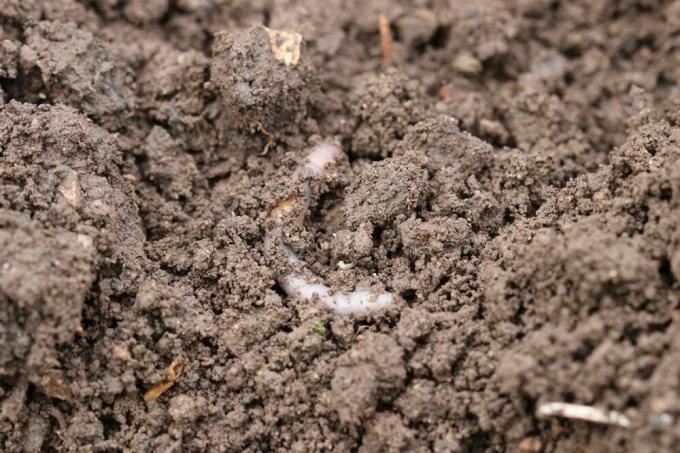
In addition to the equipment in the house and a good planting plan, the condition of the soil plays an important role in thriving. He is much more stressed than outside in the bed and therefore needs a certain amount of time to regenerate. You can prepare it accordingly or replace it completely every three years.
- Floor should consist of two layers
- Below a layer of well-seasoned horse manure
- On top of the dung comes earth
- Alternatively, mix soil with manure or mature compost
- Soil in the greenhouse should be moderately heavy and loose
- From crumbly to finely crumbly structure, so that no water accumulates
- Should contain sufficient nutrients depending on the planting
- It is best to replace exhausted soil
- Cultivation method under glass similar to that outdoors
- Make the best possible use of the greenhouse floor
- Grow heavy feeders in the first year, medium feeders in the second and weak feeders in the third
- In the fourth year, give the ground a rest
- Add compost and green manure
Heavy consumers for the greenhouse are z. B. Cucumber, pumpkin, tomato, pepper and leek. Medium consumers are onions, leeks, lettuce and spinach. Radishes and legumes are among the weak eaters. In order not to lose the overview here, the already mentioned plan comes into play again, which can be very helpful not only in large greenhouses.

The best way to do this is to divide the floor into four areas. Heavy, medium and weak consumers as well as green manure then migrate from field to field. The whole thing is called rotating crop rotation, which works in the greenhouse as well as outdoors.
Tip:
The repeated cultivation of the same type of plant should be avoided or the soil must be replaced every year.
The right choice of plants
When the rest of the garden is still in deep hibernation, the new greenhouse season is about to start. The first sowings can be done as soon as the soil in the house has a temperature of at least eight degrees. Depending on the location and orientation of the greenhouse, this is the case around February
When selecting the greenhouse plants, the size of the greenhouse plays a decisive role in addition to the special needs of the individual species. They are most often used for growing vegetables, but herbs and even exotic fruits can also be grown in them without any problems. Due to the different sizes and growth characteristics, especially exotic plants, a specially created planting plan is particularly recommended. But which plants are suitable for greenhouse planting?
spring vegetables
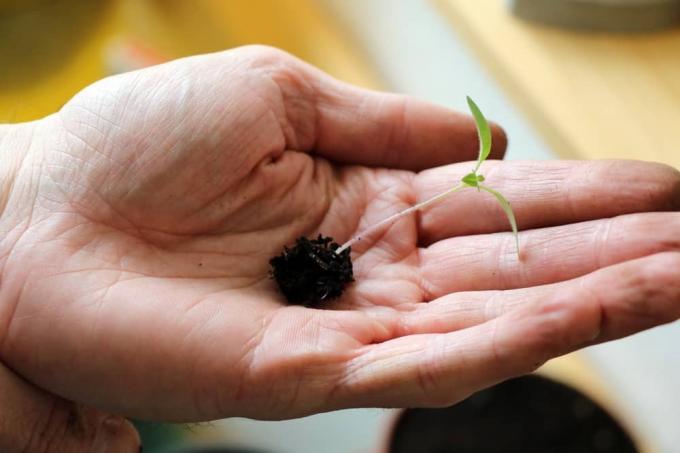
Before the first sowing, it is best to draw up a plan for planting. From the end of February/beginning of March, summer vegetables such as tomatoes, cucumbers, peppers, chillies and aubergines can be sown or planted. be preferred. You can plant the first seedlings such as early lettuce and lettuce or cold-tolerant kohlrabi varieties. For a continuous harvest, lettuce and kohlrabi can be replanted every 3-4 weeks. If the night-time temperatures drop sharply again, it may make sense to cover the young plants with fleece at night. Radishes and spring radishes can also be sown now, with radishes developing the fastest.
Tip:
If you don't want to experience a nasty surprise from a post-frost or a sudden cold snap, you should get a greenhouse banner. In this DIY greenhouse Instructions show how easy it is to build them yourself.
summer vegetables
The best time to plant tomatoes, peppers, aubergines, melons and chili is around mid-May and cucumbers in the greenhouse from the end of May. Tomatoes and cucumbers need a trellis or climbing aid. It is also advisable not to grow nightshades such as tomatoes, peppers and aubergines in the same location every year. It is best to keep a break in cultivation between each other of about four years.
Tip:
In principle, tomatoes in particular can also be planted several years in a row at one and the same location. However, they are then more susceptible to diseases.
Autumn and winter vegetables
Fast-growing lamb's lettuce, endives, spinach or winter purslane can be sown in the greenhouse by the beginning of September at the latest. Or you prefer them in bowls and plant them in the now free areas from October. So you can harvest until February. Now is also the right time to sow beetroot and chard, which can be harvested after a few weeks as 'Baby Beet' or 'Baby Leaf'. If the outside temperature drops to minus seven degrees or more, a fleece cover is recommended.
Heat-loving herbs

If you plant tomatoes or cucumbers, a large part of the soil area usually remains free. You can use it to grow herbs, for example. Among other things, they can prevent irrigation water from splashing onto the plants from the ground, which tomatoes in particular do not like at all. In addition, thanks to their essential oils, some herbs can keep certain pests away or influence each other positively or negatively during growth.
However, not every herb can be grown under greenhouse conditions. Warmth-loving herbs such as rosemary, oregano, thyme, basil, cress, marjoram, chervil, coriander and purslane are best suited. Basil should not be planted with thyme or oregano. While basil has a high water and nutrient requirement, the other two like it rather dry and low in nutrients. Curry herb and various types of mint also feel at home in the greenhouse.
summer flowers
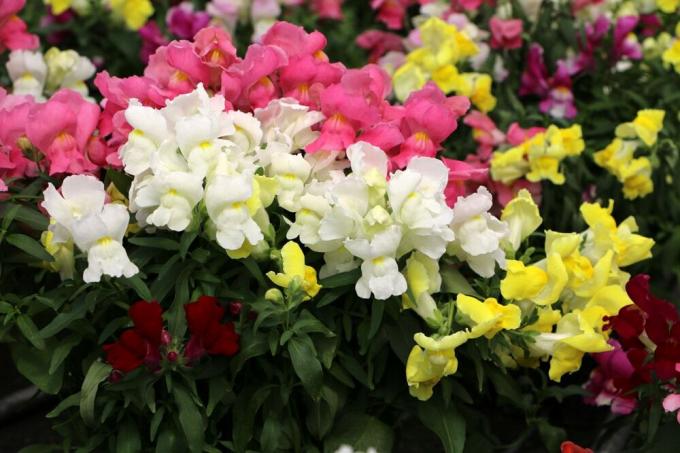
In February/March, when the light intensity increases noticeably, a greenhouse can be used to sow or grow summer flowers. preferable. Of course, this requires appropriate germination temperatures, which vary depending on the species.
Temperatures of 18-20 degrees
At these temperatures, lobelia, hard-working Lizzie, ornamental tobacco, blanket flower, summer carnation, Snapdragon, zinnia, spider plant, salvia, delphinium, avens, daylily, spurflower and columbine.
Of at least 15 degrees
Summer aster, split flower, levkoye, foxtail, jester flower and helichrysum need a little less warmth. Now canna, begonia and gloxinia can also be planted.
Of at least 12 degrees
At just 12 degrees, chrysanthemums, coneflowers, marigolds, fairy mirrors, maidens in the green and plumes germinate.
Tip:
In April, the first flowers that have been sown can be planted in pots and annual summer flowers such as cup mallow, sunflowers or scented auricles can be sown.
Exotic fruits in the greenhouse
Tomatoes and cucumbers are standard in greenhouses. But a greenhouse can do even more. In addition to local vegetables, you can also grow exotic fruits such as mangoes, kiwi, bananas, limes, figs, lemons or oranges in this way. The selection of the fruit depends above all on the size of the greenhouse and the right temperatures.

Kiwi, orange, lemon, fig and lime need temperatures of 2-12 degrees. Papaya and passion fruit need a little more warmth with temperatures between 12 and 18 degrees and sufficient space for climbing. Need a lot of surface and most heat with at least 18 degrees mango, pineapple, banana and coconut. Even with exotic greenhouse plants, only species with the same conditions or conditions should be used. claims to be planted together.
Tip:
If you prefer flowering greenhouse plants, you can also plant tropical flowers or shrubs in your greenhouse. This can e.g. B. Bromeliads, camellias, orchids, oleander, calla, olive, strelizia, passion flower, agave or aloe vera.
 garden editorial
garden editorial I write about everything that interests me in my garden.
Learn more about greenhouse
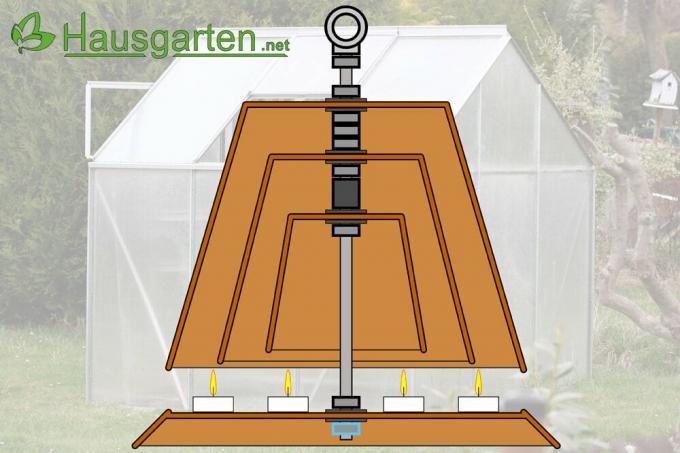
DIY greenhouse heater: how to heat the greenhouse with candles
For garden lovers, the gardening season often begins before spring on the windowsill at home or in the mini greenhouse. But when things really got going in the greenhouse and the frost came again at night comes back, it can very quickly lead to frost damage or even the death of entire young plants come.

Build a mini greenhouse yourself: 4 ideas for a DIY indoor greenhouse
A mini greenhouse can be built quite quickly and is a good alternative to a purchased indoor greenhouse. In addition to small plant experiments with children, you can also very well prefer the vegetables for the garden.
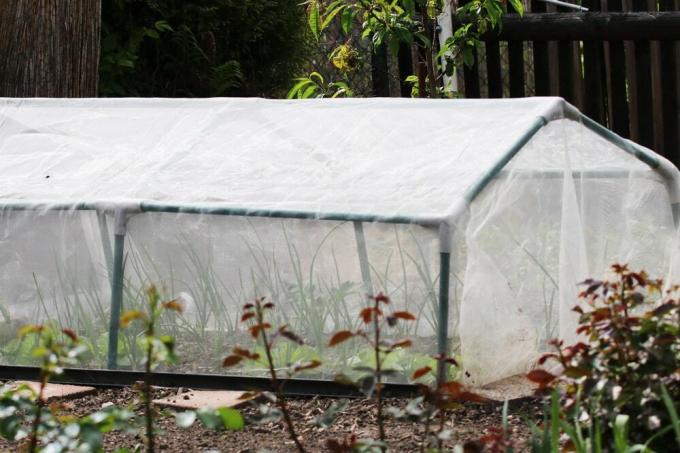
Build a foil tunnel yourself – DIY instructions for a simple plant tunnel
If there is a polytunnel in the garden, you can outsmart bad weather. Well protected from rain, hail and frost, vegetables and salads thrive. You don't have to dig deep into your pocket for this practical garden helper. This DIY guide explains how to build a simple plant tunnel yourself.
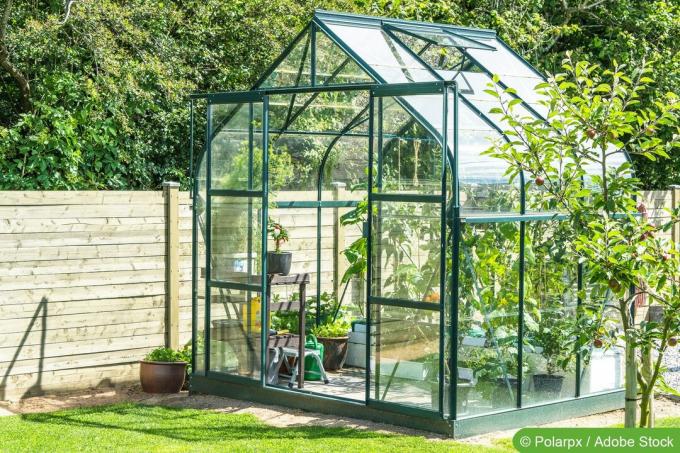
Greenhouse Foundation: Setup & Building Tips
For the garden lover, his greenhouse is the ultimate. With the self-construction of your own greenhouse you create the best opportunities for your individual cultures grow and harvest vegetables, flowers or herbs less dependent on the season and the prevailing weather can.

Build your own tomato house – building instructions made of wood and foil
Anyone who is tired of buying tomatoes in the supermarket or using goods from abroad can also help themselves. It's easy and not particularly expensive to grow your own tomato plants in your own garden.

The 17 most common cucumber diseases in the field and greenhouse
Cucumbers can be found in many gardens and greenhouses and are very popular among gardeners. However, there are some cucumber diseases that can severely deplete your harvest, whether grown outdoors or in a greenhouse. Find out what typical cucumber diseases there are, how to recognize them and what countermeasures to take.
